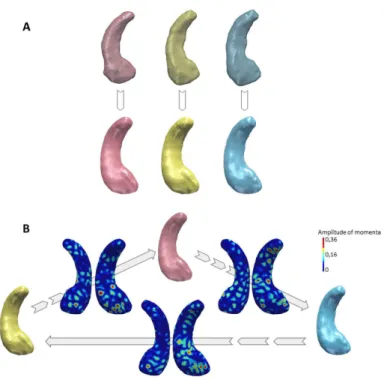Diffeomorphic Iterative Centroid Methods for Template Estimation on Large Datasets
Texte intégral
Figure



![Fig. 4. Left panel: coronal view of the MRI with the meshes of hippocampi segmented by the SACHA software [26], the right hippocampus is in green and the left one in pink](https://thumb-eu.123doks.com/thumbv2/123doknet/14265493.489781/17.892.200.722.347.540/left-coronal-meshes-hippocampi-segmented-sacha-software-hippocampus.webp)
Documents relatifs
Each of the two proposed strategies selects a sequence of op- timization passes that (i) allows static WCET analysis tools to automatically detect loop bounds (i.e.
For this application, the template functions obtained by the Robust Manifold Estimator based on our algorithm seem to capture the salient features of the sample of hip and knee
Keywords: Deformable template model; atlas estimation; diffeomorphic deforma- tions; stochastic algorithm; Anisotropic MALA; control point optimization; sparsity....
We consider the LDDMM setting where the deformations are parame- terized by a finite number of initial control point positions and momenta such as in [20] and extend the Bayesian
3.3 Comparison between iterative centroid and direct atlasing In the following experiments, we evaluate the quality of the iterative centroid atlas and its divergence with respect
Through a number of single- and multi- agent coordination experiments addressing such issues as the role of prediction in resolving inter-agent goal conflicts, variability in levels
électromagnétique et molécule doit fournir dans les deux cas les règles de polarisation régissant les tran- sitions à deux quanta. La règle de
computational burden point of view, only 4 solver iterations are allowed for the Toeplitz method to compete with the direct MVM reconstruction in term of the number of operations,





